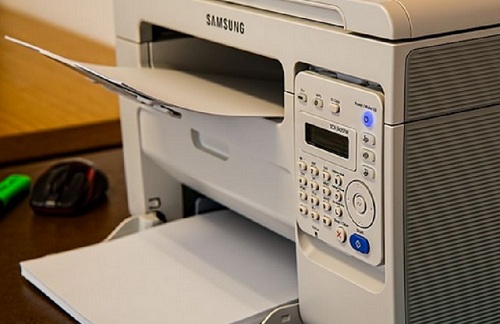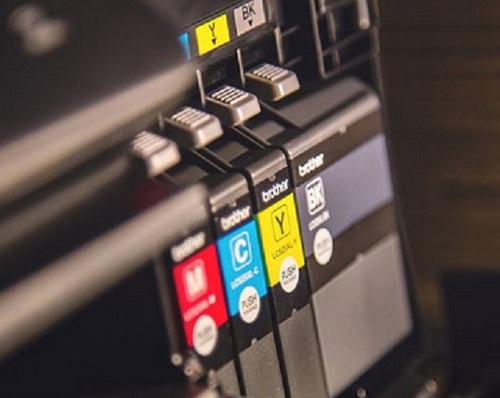A Guide to Understanding ISO Standards in the Print Industry

ISO standards are set by the International Organization for Standardization, also known as ISO. This organization has created over 17,500 ISO standards for the printing industry, with their latest development concerning print speed, or ISO PPM (pages per minute). If you’re interested in printer ISO, read on for more information about the organization and its recent developments.
Who is ISO?
The ISO is based in Geneva, Switzerland. They are an organization that collaborates with the largest names across a wide range of industries and businesses to establish equal standards for products around the world. Computers, ink cartridges, and commercial printers fall under their jurisdiction, and they conduct extensive testing to ensure the quality of many printer products. When you see the initials “ISO” followed by a number, this is indicative of the specific standard that is accepted by the organization.
What is Printer ISO?
Printer ISO is a dependable standard that measures the rate of pages that a desktop printer is able to yield, the quality of color reproduction provided by a commercial printer compared to the original file, and the grade of printer paper used. Applying these standards ensures a reliable result every time, regardless of the printer brand. Using the ISO standards for the printing industry also allows consumers to easily compare and contrast the benefits and advantages of one printer over another.
Pages Per Minute
The standard of ISO PPM was completed in March 2009 and has since been internationally approved and accepted. Like previous standards, it was developed by technical representatives from printing giants like Epson, Kodak, Lexmark, Hewlett-Packard, Canon, and Brother. Companies that follow ISO standards for the printing industry report the amount of pages that each printer model and cartridge yields, based on ISO-approved test pages.
ISO versus Page Yield
A printer’s page yield is the approximate number of pages that one printer cartridge can print. Each printer manufacturer has historically used their own methods to estimate page-printing data, but this has made it notoriously difficult for customers to compare different products and competing brands, making ISO standards for the printing industrycrucial.
The printing standards take all printers into account and holds them to the same standards. Much like the MPG (miles per gallon) comparison between competing vehicles by different manufacturers, ISO allows for a direct side-by-side comparison
Toner Standards
The ISO started to collaborate with the International Electrotechnical Commission, or IEC, in 2004 to publish print yield standards for color toner, monochrome toner, and color inkjet cartridges. Those standards are ISO/IEC 19798, ISO/IEC 19752, and ISO/IEC 24711 respectively. However, with ever-changing technology, the ISO set all-new standards for ink and color toner in 2006.
Printing Paper Standards
The ISO standards for the printing industry ensure that quality paper is produced to meet specific printing needs. It does this by certifying paper mills through ISO 14001 to ensure that paper meets strict environmental specifications. Paper also needs to meet ISO 9706 to guarantee that the paper maintains peak condition for several years, which makes it optimal for printing legal, medical, and financial documents.
ISO Color Testing

ISO page yield and PPM standards are determined through rigorous testing of equipment. These examinations differ slightly between color and monochrome cartridges. The first suite of testing consists of determining cartridge page yields of predominantly black text documents, while the second string of testing focuses on cartridge page yields of an array of color text and graphics. A minimum of three cartridge sets are tested on three different printers for a total of nine different cartridges. To keep ISO standards in the printing industry unbiased, each test is conducted by a disinterested third party.
Monochrome Testing
Monochrometesting uses a standard page, which has approximately 5% coverage. This standard test page will be printed over and over until the cartridge empties. An empty ink cartridge is determined by discoloration on the test page or an “out of ink” message from the printer.
Multicolor Testing
Multicolor testing uses a set of five different test pages. The first four are regular customer page prototypes, while the fifth is a diagnostic page. The pages contain a mix of images and text at all different quantities on each page. This accounts for 5% of each page testing each color, adding up to a total of 20% page use. The pattern is printed repeatedly until the cartridge is empty.
Color Richness Testing
ISOprintingstandards are also applied to the richness of color produced by a commercial printer, in comparison with the color originally seen on the computer screen. If the design program you are using utilizes standardized color profiles, then printer tests will confirm that the color has met ISO standards. The testing will also indicate whether the transparency is in line with ISO guidelines. Both the color and transparency can then be adjusted on commercial printers to meet ISO standards for the printing industry.
It is important to note that this is more than just red looking red—it is the idea that the hue that is created by mixing various amounts of magenta, cyan, yellow, and black matches the wavelength of light that the design program specifies.
Accuracy of Results
Since customers are not likely to be able to replicate all variables of the controlled testing environment, page yields, color saturation, and even pages per minute may vary during their own tests. Factors of actual use, such as room temperature, the use of double-sided printing, printing multiple pages on each sheet of paper, and page coverage variations, all skew the results.
With environmental factors affecting ISO standards for the printing industry, these are not exact predictors of printer and cartridge performance; they are just a strong indicator of how particular products will perform in comparison to competitors.
Finding the Best Products
Whether you print with an HP, Dell, or Brother machine, use ISO standards for the printing industry to discover which printers and cartridges will serve you best. Learn more about how 1ink.com can help you stock up on ink and toner cartridges through our blog today!
